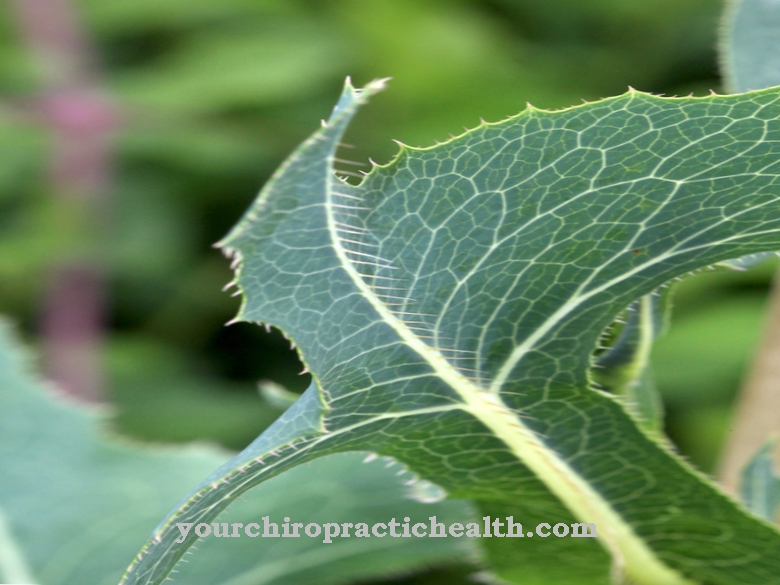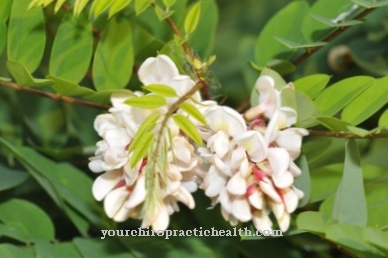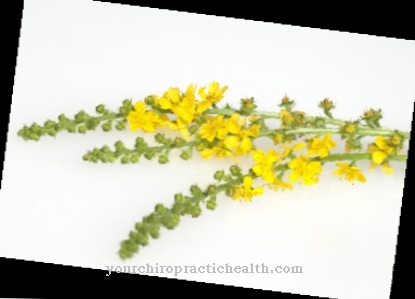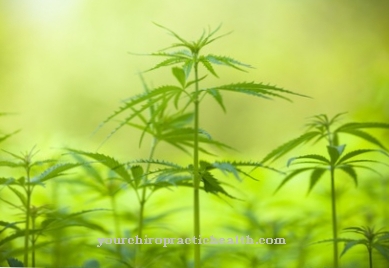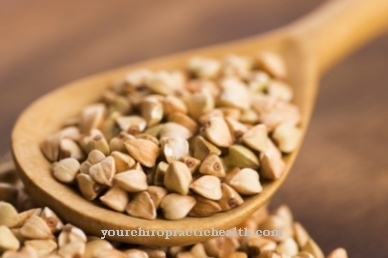Occurrence and cultivation of the Odermennig

The plant is native to Europe and northern Asia. Odermennig grows on poor meadows and on the edges of forests up to the middle mountain ranges. In Central Europe, the Odermennig is hardy, but only summer green. It grows as a perennial herb and is between 15cm and 1.5m tall. Its roots are anchored deep in the ground. Hairy stems emerge from them. There are pinnate leaves on these. These are 10 to 25 cm long and the underside is often covered with a white felt.
The Odermennig blooms from June to September. The yellow flowers are short-stalked and arranged in elongated racemes. The flower consists of yellow petals, stamens and carpels. The ovary sits in the middle. Between August and September, when the fruit is ripe, the Odermennig forms small fruits with hooks. These Velcro fruits are used to spread the seed. They get caught with their little hooks in the fur of passing animals and are thus distributed in the area.
The Odermennig belongs to the rose family and is therefore a relative of the meadowsweet. In addition to the common ormennig (Agrimonia eupatoria) there are 14 other species. In Germany there is also the great ormennig (Agrimonia procera). However, this has no medical relevance.
Effect & application
The main active ingredients of the Odermennig are essential oils (triterpenes), tannins, bitter substances, flavonoids, phenol carboxylic acids and silicic acid. The essential oils and tannins of the Odermennig are said to have an anti-inflammatory effect. The essential oils mainly have an antiviral and antibacterial effect. The tannins have an astringent, i.e. astringent, effect. The astringent effect of the Odermennig can have a positive effect on wound healing.
Astringents have the ability to change or destroy protein structures. On the one hand, this is useful because the protein structures of viruses and bacteria are changed in such a way that they perish. On the other hand, the remodeling processes create a kind of protective film that covers the damaged skin. Odermennig is also rich in polyphenols. Polyphenols belong to the phytamines. Phytamines are plant compounds that have a positive effect on health. They have an antioxidant effect and thus act as free radical scavengers.
In view of this spectrum of activity, the Odermennig is often used for inflammation. Inflammation of the gums, inflammation of the mouth and throat as well as kidney and bladder infections are indications for treatment with ormennig. The basis is always the Odermennigtee.
For this purpose, 250ml of boiling water is poured over a teaspoon of dried orchid herb. The tea should be covered for ten minutes. The tea is drunk when there are problems with the internal organs. Inflammation of the skin can be treated with organic tea packs. Skin compresses with ormint tea can also provide relief from itching. In the case of inflammation in the mouth and throat, the Odermennigee can be cooled and used as a gargle solution.
Ormennig is also given for mild diarrhea or loss of appetite. But be careful, the tannins can also irritate the stomach lining. More than three cups of tea should not be drunk per day. In addition, care should be taken to ensure that bulk tea should not be drunk immediately before or after taking medication. The herb hinders the absorption of active ingredients. There should be about two hours between taking the medication and drinking tea.
The Odermennigkraut is also one of the 38 flowers of the Bach flower therapy. Agrimony, as the Odermennig is called there, is a Bach flower that is mainly used in trauma therapy. It is designed to help overcome fears and come to terms with what has been repressed. In traditional Chinese medicine (TCM), the ormennig is mainly used for gastrointestinal diseases, as it has a strengthening effect on the gastric qi.
Importance for health, treatment & prevention
The Odermennig already had an enthusiastic follower 100 years before Christ. The Greek war leader Mithridates used the herb to treat a wide variety of diseases. Mithridates was nicknamed Eupator, which helped the Odermennig to get its botanical nickname eupatoria. The Greek doctor Dioscurides also described the healing powers of the Odermenniga thousands of years ago. The medicinal herb was also part of the medicine of St. Hildegard von Bingen.
She used the Odermennig mainly as a drainage agent, which was supposed to bring out tough slime. Even today, chewable tablets based on Hildegard von Bingen's recipe are still available. They are mainly used in the treatment of chronic sinus infections. In the Middle Ages, the focus was on the plant's strengthening effect on the liver. In Mathioli's herbal book, the use for coughs, fevers and external wounds was also recommended. The Odermennig still has its permanent place in folk and empirical medicine.
Commission E, an expert commission for herbal medicinal products, consisting of various representatives from the fields of medicine, pharmacy and toxicology, certifies that the Odermennig has a positive effect on mild diarrheal diseases, inflammation of the mouth and throat and skin infections. Despite this positive herbal monograph, the Odermennig is rarely part of conventional medical medications.

